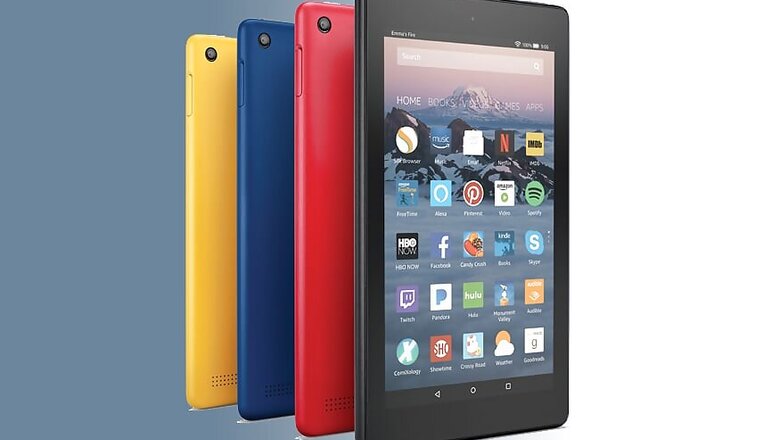
views
Amazon has become amazing at building top-end tablets that retail at rock bottom prices and its latest generation slabs for kids (the Fire 7 Kids Edition and Fire HD 8 Kids Edition) and for big kids (Fire 7 and Fire HD 8 with Amazon Alexa) are no exception. But will this combination of specifications and pricing be enough to get people excited about tablets, again?
Announced on Wednesday, the new tablets boast even better screens, longer battery life, less weight, more onboard storage and, in the case of its new adult tablets, the company's voice-activated assistant, Alexa, built in.
Yet, in the case of the Fire 7 tablet, prices will start at just $49.99, while its larger sibling, complete with quad-core processor and 1-million pixel 8-inch display will cost from $79.99.
Also read: Google Android O Preview: Smart Text Selection, Picture-in-Picture, Android Go And More
"We think customers should expect more from their tablet -- better hardware, more features, access to tonnes of great content -- but shouldn't have to pay a premium for it," said Kevin Keith, General Manager, Fire Tablets. "Our approach is to offer premium products at non-premium prices."
Unlike other companies locked in competition within the tablet space, Amazon has always treated its devices essentially as loss leaders and instead looks to earn revenues via content and services.
However, tablet sales are continuing to tank globally. IDC preliminary data published this month suggests tablets have taken another 8.5% sales slide with just 36.2 million devices being sold over the first quarter of 2017. That's the 10th quarter in a row that sales of traditional tablets such as the iPad have moved down rather than up.
Strategy Analytics, which also counts Windows-powered 2-in-1 devices in its figures, also reports a 10% drop in sales activity since the start of 2017, which would be much more pronounced if it weren't for hybrid devices and the Surface Pro propping up the market.
Also read: Zomato Hacked, 17 Million User Records Stolen
"The rate at which the tablet market grew from 2010 to 2013 was unlike many other consumer-oriented device markets we've seen before," said IDC worldwide mobile device trackers program VP Ryan Reith.
However, the market is now contracting almost as quickly and it seems that smartphones are primarily to blame. Their screens are almost as big and the devices themselves are much more mobile. Tablet owners are also realising that their devices are more limited in capability than a traditional laptop.
But there's also the growing realisation that most people that want one, already have one and that existing tablet is doing the job -- web browsing, running apps and consuming multimedia content -- very well. What's more, unlike a smartphone, which is a personal communication device, the tablet has unwittingly become fun for all the family. According to Global Web Index, 60% of tablet users in the 33 territories it monitors globally, are currently sharing their device with between one and four other people.
Therefore, against this growing consumer trend, the only swift action companies can take, other than bringing out a game-changing, innovative device, is to make their products affordable enough that each household member can justify having a tablet of their own.
In March, Apple cut the price of the iPad and Amazon's new Fire devices are not only the most technologically advanced they've ever built, they're also the most affordable since the company moved into the tablet market.
Also read: Nasscom Denies Mass IT Layoffs; Warns Employees to 'Re-Skill or Perish'




















Comments
0 comment